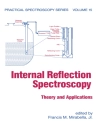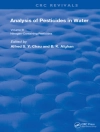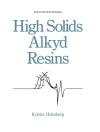This practical guide for advanced students and decision-makers in the pharma and biotech industry presents key success factors in R&D along with value creators in pharmaceutical innovation.
A team of editors and authors with extensive experience in academia and industry and at some of the most prestigious business schools in Europe discusses in detail the innovation process in pharma as well as common and new research and innovation strategies. In doing so, they cover collaboration and partnerships, open innovation, biopharmaceuticals, translational medicine, good manufacturing practice, regulatory affairs, and portfolio management. Each chapter covers controversial aspects of recent developments in the pharmaceutical industry, with the aim of stimulating productive debates on the most effective and efficient innovation processes.
A must-have for young professionals and MBA students preparing to enter R&D in pharma or biotech as well as for students on a combined BA/biomedical and natural sciences program.
Inhaltsverzeichnis
List of Contributors XVII
Foreword XXI
1 Introduction to the Book 1
Alexander Schuhmacher, Oliver Gassmann, and Markus Hinder
Reference 8
2 Global Epidemiological Developments 11
Stephan Luther and Peter Schmitz
2.1 Introduction 11
2.2 Model of Epidemiological Transition 12
2.3 Global Burden of Diseases 15
2.3.1 Trends in the Distribution of Disease Burden 16
2.4 Infectious Diseases 20
2.4.1 (Re-)emerging Infectious Diseases 23
2.4.2 Neglected Tropical Diseases 26
2.5 Noncommunicable Diseases 29
2.6 Antimicrobial Resistance 32
2.7 Dynamics 35
References 38
3 The Value of Pharmaceutical Innovation: Concepts and Assessment 45
Sam Salek and Paul Kamudoni
3.1 Introduction 45
3.2 Concepts and Definitions of Value 46
3.3 Stakeholder’s Perspectives on Value 47
3.3.1 Drug Regulatory Agencies 47
3.3.2 Health Technology Assessment 47
3.3.3 Patients 49
3.3.4 Prescribers/Clinicians 49
3.4 Recent Developments Influencing the Definition and Assessment of Value 50
3.5 Recommendations: Implications for R&D 51
3.6 Discussion 52
3.7 Conclusion 56
References 57
4 A Review of the Pharmaceutical R&D Efficiency: Costs, Timelines, and Probabilities 61
Alexander Schuhmacher, Oliver Gassmann, and Markus Hinder
4.1 Introduction 61
4.2 The Historical Perspective 62
4.3 The R&D Phase Model 63
4.4 The Low R&D Success Rates 63
4.5 The Long R&D Time Intervals 67
4.6 The High Cost of Pharmaceutical R&D 71
4.7 The Reduced R&D Efficiency 73
4.8 Can an Increase in R&D Value Compensate the Reduced R&D Efficiency? 76
References 78
5 Financing Pharmaceutical Innovation 81
Sviataslau Sivagrakau
5.1 Introduction 81
5.2 Measuring Innovation: Categories of New Drugs 84
5.3 Productivity of Pharmaceutical Industry throughout Time 86
5.4 Measuring the Cost of Developing New Medicines 87
5.5 Funding Drug Development: a Global Endeavor 91
5.6 Public and Private Funds: Complementary Finance for Drug Development 95
5.7 How Commercial Drug Development Projects Are Financed Today: Big Firms, Small Firms, and Their Cooperation 97
5.8 Public Health Economics and Financing Pharmaceutical Innovation 99
5.9 Conclusion 101
Acknowledgment 102
References 102
6 Challenges and Options for Drug Discovery 107
Werner Kramer
6.1 Introduction 107
6.2 Paradigm Shifts of R&D Organizations 108
6.3 Productivity of Drug Discovery 109
6.4 Is There an Innovation Gap in Biomedical Research? 111
6.4.1 To Go for First in Class or Best in Class 112
6.4.2 How We Define Medical Innovation? 112
6.5 Why Did Drug Candidates Fail? 113
6.5.1 Why Is the Dropout Rate So High in Early Clinical Development? 115
6.5.1.1 Drug Behavior In Vivo: Role of Transport Proteins 115
6.5.1.2 Hypes and Lack of Scientific Thoroughness 116
6.6 Implications from the ‚Lessons Learnt‘ for Future Drug Discovery Research 123
6.6.1 Organization of Drug Discovery and Development 123
6.6.2 Elucidation of the Physiological Validity of a Target for the Human Disease 125
6.6.2.1 Extensive Inquiry of (All) Published Data of a Target or Pathway 125
6.6.2.2 Integrative Knowledge Management 127
6.6.2.3 Demonstration of the Involvement of a Target in Human Disease 128
6.6.2.4 A Stringent and Comprehensive Test Sequence 132
6.6.2.5 Translational Clinical Trials 135
Acknowledgment 136
References 136
7 Translational Medicine: Enabling the Proof of Concepts 141
Gezim Lahu and John Darbyshire
7.1 Introduction 141
7.2 Translational Medicine and Its Role/Value in Early Development 143
7.3 Knowledge Generation 144
7.4 Types of Data, Experiments, and Tools Needed to Move from Basic Research to Early Clinical Development 144
7.4.1 Dose Selection 145
7.4.2 Animal Models 146
7.4.3 Fraction of NOAEL and Efficacious Dose 149
7.4.4 Allometric Scaling and PBPK 150
7.4.5 Physiologically Based Pharmacokinetic Models PBPK 151
7.4.6 Pharmacokinetic and Pharmacodynamic Modeling 151
7.5 FIM (Dose Escalation and MTD) 153
7.6 Proof of Concept (Po C) 154
Summary 156
References 157
8 Preclinical Safety and Risk Assessment 161
Paul Germann and Rob Caldwell
8.1 Introduction 161
8.2 Test Systems 161
8.2.1 In Silico Analysis 161
8.2.2 In Vitro Experiments 162
8.3 Case Study: h ERG Assay 163
8.3.1 In Vivo Experiments 164
8.4 The Preclinical ‚Package‘ during the Development of an NME 165
8.5 Factors Influencing the Preclinical Data Set 166
8.5.1 Timing and Costs 167
8.5.2 Intended Clinical Application Route 167
8.5.3 Treatment Duration and Treatment Frequency 167
8.5.4 Clinical Indication 167
8.5.5 Ongoing Changes of the Regulatory Landscape 168
8.5.6 New Drug Formats 168
8.6 Translation into Humans:The ‚Therapeutic Window‘ 169
8.7 Influence of Intended Therapeutic Use on the Risk Assessment (RA) 169
8.8 Deep Dive Case Study: Safety Assessment of Biological Drug Formats 170
8.9 NBE Case Study 1 175
8.10 NBE Case Study 2 175
8.11 Carcinogenicity Risk Assessment for Marketed Drugs 176
8.12 Treatment Duration 178
8.13 Conclusion – the ‚Art‘ of Preclinical Safety: Summarizing the Concept of Hazard Identification and Description, Risk Assessment, and Risk Management 179
Acknowledgment 179
Disclosures 180
References 180
9 Developing Commercial Solutions for Therapeutic Proteins 183
Galina Hesse
9.1 Introduction 183
9.2 Developing Commercial Solutions for Therapeutic Proteins 184
9.2.1 Defining a Target Product Profile 184
9.2.2 Developing Formulations for Therapeutic Proteins 186
9.2.3 Testing Formulations for Therapeutic Proteins 188
9.2.4 Development of Primary Containers 188
9.2.5 Development of Application Systems 190
9.3 Quality by Design 192
9.4 Examples for Innovations in Manufacture of Sterile Pharmaceutical Products 194
9.5 Summary 197
List of FDA/ICH Guidances Referenced 198
Disclaimer 199
References 199
10 The Evolution of Clinical Development: From Technical Success to Clinical Value Creation 203
Markus Hinder and Alexander Schuhmacher
10.1 Introduction 203
10.2 CD: Changes and Challenges 204
10.2.1 Clinical Endpoints: From Symptom-Oriented Endpoints to Hard and Predefined Endpoints 204
10.2.2 Determination and Quantification of Risks 205
10.2.3 Assessment of Medical Progress in Context of Available Therapeutic Options 206
10.2.3.1 Eb M 206
10.2.3.2 Health Economics, Pharmacoeconomics, and the Fourth Hurdle 207
10.2.3.3 Results of These Changes and Challenges 208
10.3 Technical Success and Clinical Value Creation in CD in the Future 208
10.3.1 Established and Novel Approaches to Determine the Dose–Exposure–Response Relationship 210
10.3.2 Comparators 212
10.3.3 Patient Stratification to Increase Treatment Response and Benefit and Reduce Risk 212
10.3.4 New Operational Tools to Succeed in Trials with Increased Complexity, Special Populations, or Large Size 213
10.3.5 Collaboration and Outsourcing as Tools to Work in Networks 214
10.3.6 Collaboration across Sectors and Industries to Boost the Next Wave of Innovation 215
Disclaimer 218
References 218
11 Translational Development 225
Nigel Mc Cracken
11.1 Introduction 225
11.1.1 Legacy 226
11.2 Translational Development 227
11.2.1 TP 228
11.2.2 Translational Toolkit 229
11.3 Dose Optimization 230
11.3.1 Physicochemical Properties 231
11.3.2 Target Affinity and Selectivity 231
11.3.3 Clearance 231
11.3.4 Prediction of Human Dose 232
11.4 Pharmacogenomics 233
11.4.1 Patient Segmentation 233
11.4.2 Disease Segmentation 234
11.4.3 Utility 237
11.5 Biomarker Development 238
11.5.1 Biomarker Activities 239
11.5.2 Assessing the Opportunity 239
11.6 Systems Pharmacology 240
11.7 Rational Drug Development 241
11.8 Concluding Remarks 242
References 242
12 Forty Years of Innovation in Biopharmaceuticals – Will the Next 40 Years Be as Revolutionary? 245
Mathias Schmidt, Sanjay Patel, Petter Veiby, Qiang Liu, and Michael Buckley
12.1 Introduction 245
12.1.1 The Value Proposition of Biologics 246
12.1.1.1 The Patient Perspective 246
12.1.1.2 The Pharmaceutical Industry’s Perspective 248
12.1.2 Biosimilars: A Blessing or a Threat to Innovation? 250
12.1.3 Further Innovation in Biologics – Incremental or Revolutionary? 252
12.2 The Evolution of Biologics Manufacturing 252
12.2.1 Introduction 252
12.2.2 CHO Cells: The Industry Workhorse 253
12.2.3 Protein Production Strategies 253
12.2.4 The Impact of Increasing Titers on Manufacturing Facilities 255
12.2.5 Protein Purification Platforms 256
12.2.6 Conclusion: What Will the Next 40 Years of Innovation Bring? 258
12.3 The Evolution of Alternative Scaffolds 259
12.3.1 Novel Small Protein Scaffolds 260
12.3.2 Single-Chain Fragment Variables and Diabodies 260
12.3.3 Single-Domain Antibodies 261
12.3.4 Nonantibody Scaffolds 261
12.3.5 Bispecific Single-Chain Fragment Variables and Diabodies 263
12.3.6 Other Bispecific Antibody Formats 264
12.4 Antibody-Drug Conjugates 265
12.5 The Next Wave of Biologics 270
12.5.1 Orally Available Biologics 271
12.5.2 Biologics That Enter the Cytoplasm 271
12.5.3 Biologics That Pass the Blood–Brain Barrier 272
12.5.4 Translational Medicine as Driver of Innovation 272
Disclaimer 273
References 273
13 Vaccines: Where Inertia, Innovation, and Revolution Create Value, Simultaneously and Quietly 277
Pierre A. Morgon and Hannah Nawi
13.1 Introduction 277
13.2 The World of Vaccines 278
13.2.1 What Are Vaccines? 278
13.2.2 Current Vaccines Are Mainly Prophylactic: Curative Vaccines Are Emerging 278
13.2.3 Drivers to Immunize: Individual and Collective 280
13.2.4 The Pivotal Role of Recommendations 280
13.3 The Vaccine Market: Substantial, Fast Growing, with Intense and Concentrated Competition 281
13.4 The Vaccine Industry: Domination of the Heavyweights, for Now… 282
13.4.1 Barriers to Entry: From R&D Risk to Capital Intensiveness 290
13.4.2 Five Forces Analysis: Competitive Intensiveness and Downstream Hurdles 291
13.4.2.1 Acceptability 291
13.4.2.2 Accessibility 292
13.4.2.3 Availability 293
13.4.2.4 Affordability 293
13.5 New Vaccine Developments: Strategic Trends and Why Innovation Is Needed All along the Value Chain 295
13.5.1 Where Is Innovation Needed? R&D 296
13.5.2 Where Is Innovation Needed? Manufacturing and Product Improvement 301
13.5.3 Where Is Innovation Needed? Acceptability 301
13.5.4 Where Is Innovation Needed? Accessibility, Both as a Function of Supply (Availability) and Logistics 302
13.5.5 Affordability and Sustainability 303
13.6 Where Will Innovation Come from? Strategy and Players 304
13.6.1 Take-Home Messages 305
References 306
14 The Patient-Centric Pharma Company: Evolution, Reboot, or Revolution? 309
Pierre A. Morgon
14.1 Introduction 309
14.2 Health, Always… 310
14.3 The Mission of the Healthcare Industry 310
14.4 Megatrends Affecting the Strategic Scorecard of the Healthcare Industry 312
14.5 Focus on the Societal Trends and Their Consequences for the Management of Healthcare Innovation 314
14.6 The DNA of the Healthcare Industry: R&D and the Management of Innovation 316
14.7 Societal Expectations for Personalized Medicine 318
14.8 New Players Contributing to Information Management to Substantiate Value Propositions for Novel Therapies 319
14.9 The Role of the Key Stakeholders in Shaping a New Regulatory Framework 323
14.10 The Consequences for the Healthcare Industry in Terms of Governance and Capabilities 325
14.11 The Sustainable Path Forward for the Healthcare Industry 329
14.11.1 Take-Home Messages 331
References 332
15 The Pharmaceutical Industry is Opening Its R&D Boundaries 335
Alexander Schuhmacher and Ulrich A. K. Betz
15.1 Introduction 335
15.2 Open Innovation versus Closed Innovation 336
15.3 Business Models in an Open Innovation Framework 341
15.4 Open Innovation Processes 342
15.5 Capabilities and Attitudes Enabling Open Innovation 344
15.6 Open Innovation in the Pharmaceutical Industry 345
15.6.1 The More Traditional Elements of Open Innovation 345
15.6.1.1 Target Scouting 345
15.6.1.2 Research Collaborations 346
15.6.1.3 Drug Licensing 346
15.6.1.4 Outsourcing 348
15.6.1.5 Joint Ventures 349
15.6.2 The Newer Concepts of Open Innovation 349
15.6.2.1 New Frontier Science 350
15.6.2.2 Drug Discovery Alliances 350
15.6.2.3 Private–Public Partnerships 351
15.6.2.4 Innovation Incubator 351
15.6.2.5 Virtual R&D 352
15.6.2.6 Crowdsourcing 353
15.6.2.7 Open Source Innovation 355
15.6.2.8 Innovation Camps 355
15.6.2.9 Fluctuating Open Teams 356
15.7 New Business Models in View of the Potential of Open Innovation 356
15.7.1 General Trends in the Pharmaceutical Industry 356
15.8 Outlook 358
References 359
16 Out-Licensing in Pharmaceutical Research and Development 363
Oliver Gassmann, Carol A. Krech, Martin A. Bader, and Gerrit Reepmeyer
16.1 Introduction 363
16.2 Performance-Based R&D Collaborations on the Rise 364
16.3 The Impact of Collaborations on the Value Chain 365
16.4 Generating Value from Pipeline Assets by Out-Licensing 367
16.5 Pharmaceutical Companies’ Resistance toward Out-Licensing 372
16.6 Managing Out-Licensing at Novartis: A Case Study 372
16.6.1 Out-Licensing as a 10-Step Process 373
16.6.2 Out-Licensing Contract Design 375
16.6.3 Structure of the Out-Licensing Collaboration with Speedel 375
16.7 Future Directions and Trends 377
References 378
17 Trends and Innovations in Pharmaceutical R&D Outsourcing 383
Antal K. Hajos
17.1 Introduction 383
17.2 Drivers to the Use of Outsourcing 383
17.2.1 Overview on the CRO Market 383
17.2.2 Core versus Noncore Activities 387
17.3 Genesis of Outsourcing in the Twentieth Century: From Commodity to Contribution 388
17.3.1 Outsourcing Portfolio and the Move to Full-Service Provision 388
17.3.2 Globalization and the Emerging Market Hype 389
17.3.3 Procurement Takes over the Outsourcing Function 391
17.4 Current and Future Trends in Outsourcing: From Contribution to Innovation 392
17.4.1 How Has Outsourcing Itself Innovated and What Are the Future Trends? 392
17.4.2 How Does and Will Outsourcing Contribute to Innovation? 394
17.5 Discussion and Conclusion 395
References 398
18 New Innovation Models in Pharmaceutical R&D 401
Alexander Schuhmacher, Oliver Gassmann, and Markus Hinder
18.1 Introduction 401
18.2 Some Attempts That Were Recommended in the Past 402
18.3 The Increasing Pipeline Size 403
18.4 The Reduction of R&D Investments 404
18.5 The Opening of the R&D Processes 407
18.6 The Challenge with the Return on Investment 411
18.7 Changing the R&D Processes Is Not Enough 412
18.8 What Is the Best R&D Model? 413
References 414
19 The Influence of Leadership Paradigms and Styles on Pharmaceutical Innovation 416
Aubyn Howard
19.1 Introduction 417
19.2 What Is Your Concept or Model of Good Leadership? 419
19.3 Approaches to Leadership Modeling and Profiling 420
19.3.1 Personality Types 421
19.3.2 Behavioral Preferences 421
19.3.3 Developmental Stages 421
19.3.4 Competency Frameworks 421
19.4 The Developmental Approach to Leadership Paradigms and Styles 422
19.5 Inner and Outer Leadership 424
19.6 Dynamics of How Leadership Paradigms Evolve 425
19.6.1 Magic–Animistic 426
19.6.2 Impulsive–Egocentric 427
19.6.3 Conformist–Absolutist 428
19.6.4 Achievement–Multiplistic 429
19.6.5 Pluralistic–Relativistic 430
19.6.6 Evolutionary–Systemic 432
19.7 Leadership at Different Levels within Pharma 433
19.8 Optimizing Innovation in Different Organizational Models and Cultures 437
19.9 How Do We Support the Development of Evolutionary Leaders? 439
19.10 What Does It Mean to Operate from the Evolutionary Paradigm? 440
19.11 Leadership and Personal Mastery 441
19.12 Building an Evolutionary Bridge to Release Innovation 442
19.13 Conclusions 445
References 446
20 The Role of Modern Portfolio Management in Pharma Innovation 449
Joachim M. Greuel and Axel Wiest
20.1 Introduction 449
20.2 Challenges in R&D and the Origin of Pharmaceutical Portfolio Management 450
20.3 Goals and Metrics of Portfolio Management 451
20.4 Portfolio Management as Enabler of Innovation 456
20.5 Modern Portfolio Management Integrates In-House R&D, Business Development, and M&A 457
References 458
21 Patent Management Throughout the Innovation Life Cycle 461
Martin A. Bader and Oliver Gassmann
21.1 Introduction 461
21.2 The Changing Role of Patents: From Legal to Strategic 462
21.3 The Patent Life Cycle Management Model 467
21.3.1 Exploration 468
21.3.2 Generation 469
21.3.3 Protection 469
21.3.4 Optimization 470
21.3.5 Decline 470
21.4 Example: Managing IP Rights at Bayer 471
21.5 Concluding Remarks 472
References 473
Index 475
Über den Autor
Prof. Dr. Alexander Schuhmacher is a professor for R&D management, Vice Dean of the Faculty of Applied Chemistry and Senator at Reutlingen University. And he is Director for R&D performance metrics and business model innovation at Bioscience Valuation. Before joining the academic world, he worked 14 years in the pharmaceutical industry in various functions in R&D, such as in R&D portfolio management and strategic planning. He studied biology at the University of Constance (Germany), Pharmaceutical Medicine at Witten-Herdecke University (Germany) and he is also a graduate of the Executive MBA program at the University of St. Gallen (Switzerland).
Prof. Dr. Markus Hinder studied medicine at the Universities of Heidelberg, Paris and Zurich and obtained a doctoral degree in pharmacology from Heidelberg University. After graduation he trained in clinical pharmacology, cardiology and emergency medicine. Before joining Novartis he held leadership positions in clinical pharmacology, translational medicine, clinical development, medical affairs and project management. Markus is a professor at Cardiff University/ Hochschule Fresenius, reviewer for several journals and associate editor for the Journal of Translational Medicine.
Prof. Dr. Oliver Gassmann is a Professor for technology and innovation management at St. Gallen University, where he chairs the Institute of Technology Management. His teaching activities include several executive MBA programs. He has written or edited 18 books and published more than 300 journal articles on technology and innovation management. Until 2002 he headed the R&D department of Schindler. The main focus of his research lies in open innovation and global innovation processes. He is the 1998 recipient of the RADMA Prize and in 2009 was elected among the top 50 researchers by IAMOT, the International Association for Management of Technology.












